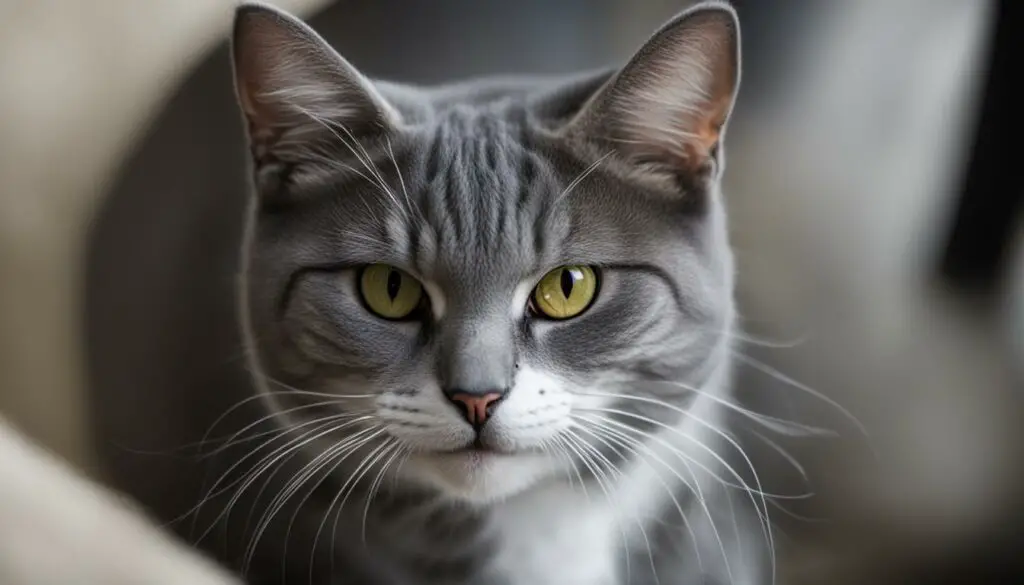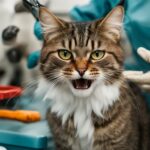I’m here to shed some light on the mysterious behavior of your cat biting its tail and growling. It’s not uncommon for cats to display aggression or compulsive disorders, but understanding the reasons behind these behaviors can help you better address your furry friend’s needs. Let’s dive into the world of cat behavior and explore why your cat may be exhibiting these intriguing actions.
Key Takeaways:
- Cat biting tail and growling can be signs of aggression or compulsive disorders.
- Understanding the reasons behind these behaviors is crucial for addressing your cat’s needs.
- Compulsive disorders in cats can manifest as excessive sucking and chewing, self-directed aggression, and overgrooming.
- Diagnosis and treatment of compulsive disorders may involve behavior therapy and medication.
- Psychogenic alopecia and feline hyperesthesia syndrome are specific compulsive disorders that can cause cat biting tail and growling.
Understanding Compulsive Disorders in Cats
Cats can develop compulsive behaviors that range from excessive sucking and chewing to hunting and pouncing. These behaviors may seem harmless at first, but they can escalate into compulsive disorders if left unaddressed. Compulsive disorders in cats can manifest as self-directed aggression, such as tail chasing or foot chewing, or overgrooming that leads to psychogenic alopecia, resulting in hair loss.
It is important to understand that compulsive behaviors in cats are not simply a result of boredom or mischievousness. These behaviors stem from a deeper conflict within the cat and can be caused by various factors, including stress, anxiety, or frustration.
To effectively address compulsive disorders in cats, it is crucial to rule out any underlying medical causes. Cats with compulsive behaviors should receive a thorough physical examination to ensure there are no underlying health issues that need to be treated. Once medical causes have been ruled out, a combination of behavior therapy, environmental modifications, and, in some cases, medication may be necessary to help manage and reduce the signs of compulsive behavior.
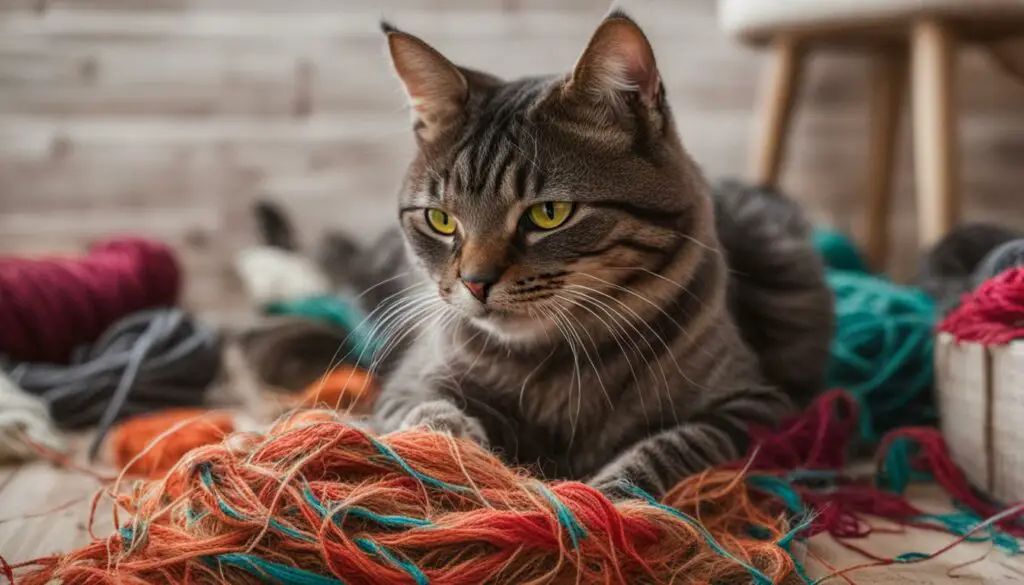
The Relationship Between Compulsive Disorders and Feline Hyperesthesia
One specific compulsive behavior that is worth highlighting is feline hyperesthesia syndrome. This poorly understood condition is characterized by rippling skin, muscle spasms, and tail chasing. While it may be a compulsive behavior itself, feline hyperesthesia can also have an underlying medical or neurological cause. Stress and anxiety can further contribute to the development and escalation of feline hyperesthesia. Treatment for this condition may involve stress relief techniques, redirection, and, if necessary, medication.
The Connection Between Compulsive Disorders and Psychogenic Alopecia
Psychogenic alopecia is another compulsive disorder that can arise from situations of conflict, frustration, or anxiety. It is characterized by excessive licking or pulling out tufts of hair in cats without any underlying medical cause. Identifying and addressing the underlying causes, along with providing increased environmental stimulation and interactive play, can help manage psychogenic alopecia in cats.
Diagnosis and Treatment of Compulsive Disorders in Cats
When it comes to diagnosing and treating compulsive disorders in cats, it is crucial to first rule out any underlying medical causes. Some medical conditions, such as allergies, infections, or pain, can manifest as compulsive behaviors. Therefore, a thorough examination and appropriate testing are necessary to ensure an accurate diagnosis.
Once a compulsive disorder is diagnosed, a combination of behavior therapy, environmental modifications, and medication may be necessary for managing and reducing the signs of compulsive behavior. Behavior therapy involves identifying triggers and implementing techniques to redirect or modify the behavior. Environmental modifications can include providing enrichment activities, such as puzzle feeders or interactive toys, to keep the cat mentally stimulated and engaged.
In some cases, medication may be prescribed to help manage compulsive behaviors. Serotonin reuptake inhibitors (SSRIs) are commonly used in cats to help regulate serotonin levels in the brain, which can have a calming effect. These medications should only be used under the guidance and supervision of a veterinarian, as dosage and duration of treatment can vary depending on the individual cat’s needs.
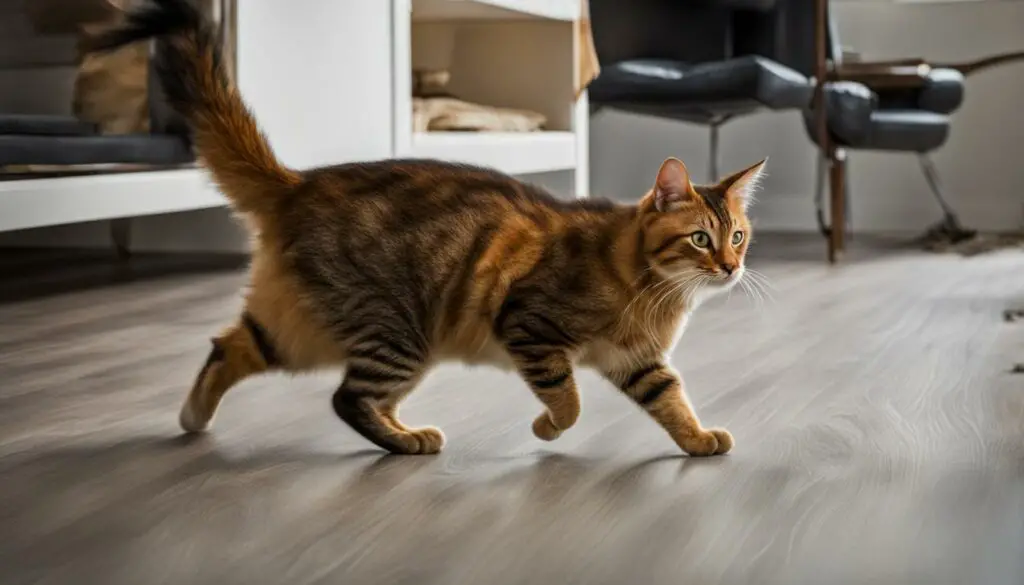
Behavior Therapy Techniques
- Positive reinforcement: Rewarding desired behaviors with treats or praise can encourage cats to engage in more appropriate actions.
- Redirected play: Providing cats with appropriate outlets for their natural hunting and play behaviors can redirect their energy away from compulsive behaviors.
- Environmental enrichment: Creating a stimulating environment with scratching posts, climbing trees, and interactive toys can help provide mental and physical stimulation.
Environmental Modifications
- Establishing a routine: Consistency and predictability in daily routines can help reduce stress and anxiety.
- Safe zones: Creating designated safe spaces where cats can retreat and feel secure can help alleviate stress and prevent triggering of compulsive behaviors.
- Reducing stressors: Identifying and minimizing stressors in the cat’s environment, such as loud noises or sudden changes, can help promote a calmer demeanor.
| Treatment Options | Benefits |
|---|---|
| Behavior therapy | Addresses the underlying causes of compulsive behavior and provides alternative outlets. |
| Environmental modifications | Creates a positive and stimulating environment to reduce stress and trigger factors. |
| Serotonin reuptake inhibitors (SSRIs) | Regulates brain chemistry to promote a calmer and more balanced behavior. |
Behavior therapy and environmental modifications form the foundation of treatment for compulsive disorders in cats. These approaches address the root causes of the behavior while providing outlets for natural instincts and reducing stress. Medication, such as SSRIs, can be a valuable tool in conjunction with behavior therapy and environmental modifications, helping to balance brain chemistry and alleviate anxiety. Remember, it is essential to work closely with a veterinarian to develop the most appropriate treatment plan for your cat’s specific needs.
Psychogenic Alopecia in Cats
Psychogenic alopecia is a compulsive disorder characterized by excessive overgrooming and hair loss in cats. It is often seen in cats experiencing situations of conflict, frustration, or anxiety. Cats with psychogenic alopecia may spend excessive amounts of time grooming themselves, resulting in patchy hair loss, especially in the lower abdomen, inner thighs, and front legs.
While the exact cause of psychogenic alopecia is not fully understood, it is believed to arise from a combination of behavioral and emotional factors. Stress and anxiety can trigger the onset and escalation of overgrooming behavior. Cats may engage in overgrooming as a way to self-soothe and alleviate their stress. However, excessive grooming can lead to skin irritation, inflammation, and secondary skin infections.
Common Signs of Psychogenic Alopecia:
- Excessive grooming leading to patchy hair loss
- Visible signs of skin irritation or inflammation
- Presence of secondary skin infections
- Behavioral changes, such as increased agitation or withdrawal
Diagnosing psychogenic alopecia often involves ruling out any underlying medical causes of excessive grooming and hair loss. A thorough physical examination, skin scrapings to rule out parasites, and skin biopsies may be conducted. Once medical causes are ruled out, the focus shifts to managing the behavioral aspects of psychogenic alopecia.
| Treatment Options for Psychogenic Alopecia in Cats | Description |
|---|---|
| Environmental Enrichment | Providing a stimulating and stress-free environment for the cat through the use of interactive toys, scratching posts, and vertical spaces. |
| Behavior Modification | Implementing positive reinforcement techniques to redirect the cat’s grooming behavior and encourage alternative activities. |
| Stress Reduction | Identifying and alleviating the sources of stress in the cat’s environment, such as changes in routine or introduction of new pets. |
| Medication | In some cases, medication may be prescribed to help manage the cat’s anxiety and compulsive behavior. This may include serotonin reuptake inhibitors or anti-anxiety medications. |
Managing psychogenic alopecia in cats requires a holistic approach that addresses both the underlying behavioral issues and any potential sources of stress. By reducing stress, providing environmental enrichment, and implementing behavior modification techniques, cat owners can help their feline companions overcome psychogenic alopecia and improve their overall well-being.
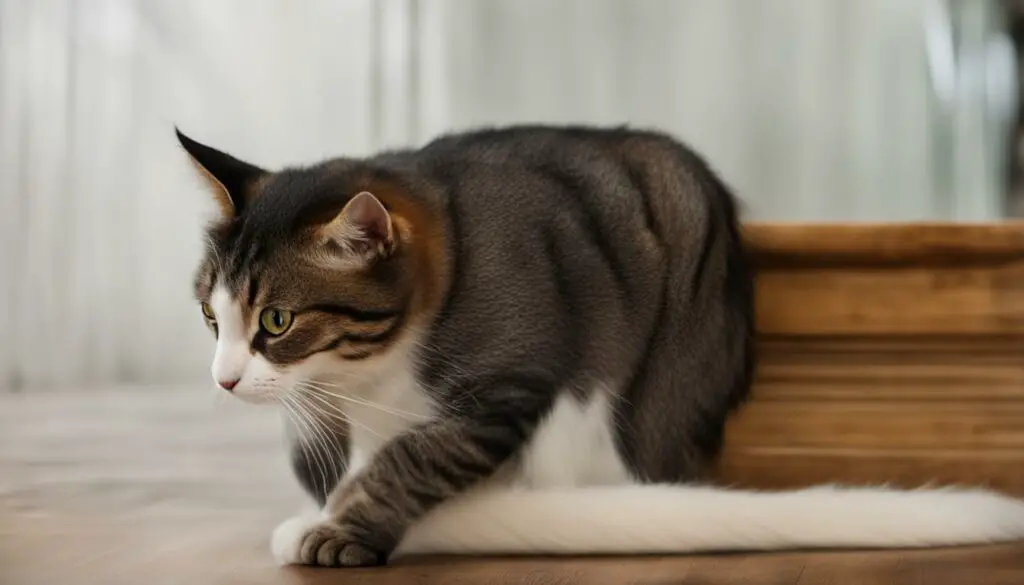
Feline Hyperesthesia Syndrome
Feline hyperesthesia syndrome, also known as rippling skin syndrome, is a complex feline behavior disorder characterized by compulsive behavior, such as tail chasing, muscle spasms, and excessive grooming. This condition, although poorly understood, can cause significant distress to both the affected cat and its owner. Understanding the symptoms, triggers, and management strategies for feline hyperesthesia syndrome is crucial for providing proper care.
Some common signs of feline hyperesthesia syndrome include sudden bouts of intense tail chasing, where the cat fixates on its tail and vigorously chases or bites it. Additionally, affected cats may exhibit rippling or rolling skin along their backs, muscle twitches or spasms, and excessive grooming to the point of causing bald patches or skin irritation. These symptoms can be distressing to witness and can significantly impact the cat’s quality of life.
| Symptoms of Feline Hyperesthesia Syndrome | Management Strategies |
|---|---|
| – Tail chasing | – Identifying and avoiding triggers |
| – Rippling skin | – Creating a calm and enriched environment |
| – Muscle spasms | – Reducing stress and anxiety |
| – Excessive grooming | – Providing regular exercise and playtime |
The exact cause of feline hyperesthesia syndrome is unknown, but it is believed to be a combination of genetic factors, environmental stressors, and neurological abnormalities. Stress and anxiety can exacerbate the condition, so creating a calm and enriched environment for the cat is essential. This includes providing regular exercise and playtime, offering interactive toys and puzzle feeders, and ensuring a comfortable and secure resting area.
In severe cases, medication may be necessary to manage the behavioral symptoms of feline hyperesthesia syndrome. Your veterinarian can prescribe medications such as selective serotonin reuptake inhibitors (SSRIs) or anti-seizure medications to help reduce anxiety and control compulsive behaviors. However, medication should always be used in conjunction with behavior modification techniques and environmental adjustments for the best results.
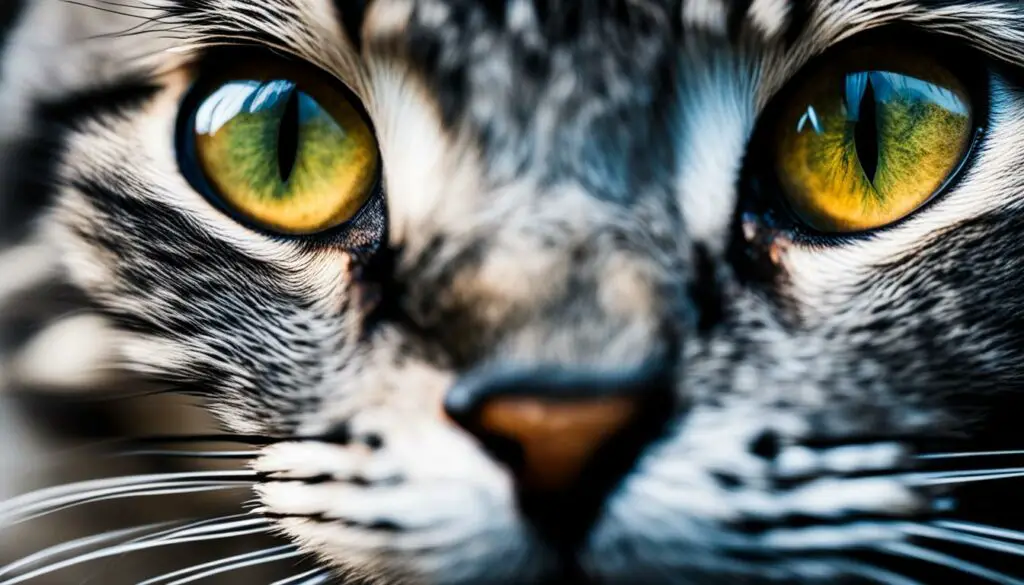
Tail Chasing and Tail Mutilation in Cats
Some cats engage in tail chasing as a form of play behavior or displacement behavior. This behavior can be triggered when a cat experiences conflict or anxiety. If left unchecked, tail chasing can escalate into tail mutilation, where the cat bites or chews on its own tail to the point of injury. Understanding the underlying causes and implementing appropriate management techniques are crucial for addressing these behaviors and preventing further damage.
One possible cause of tail chasing and mutilation is stress in cats. Cats are sensitive animals, and stressful situations can lead to the development of compulsive behaviors. It’s important to identify and address the sources of stress in your cat’s environment. Creating a routine, providing environmental enrichment, and offering interactive play can help reduce stress and provide alternative outlets for your cat’s energy.
Additionally, it’s essential to rule out any underlying medical conditions that may contribute to tail chasing and mutilation. Veterinary examination and diagnostic tests can help determine if there are any physical issues that need to be addressed. Once medical causes are ruled out, behavior modification techniques and stress relief strategies can be implemented to manage the behavior effectively.
| Possible Causes of Tail Chasing and Mutilation | Management Strategies |
|---|---|
| Play behavior or displacement behavior | Provide alternative outlets for play, such as interactive toys and regular play sessions. |
| Stress in cats | Create a calm and enriching environment, establish a routine, and offer stress relief techniques. |
| Underlying medical conditions | Seek veterinary examination and diagnostic tests to rule out any physical issues. |
| Inadequate stimulation or attention | Provide environmental enrichment, including scratching posts, climbing structures, and interactive toys. |
Tail chasing and mutilation in cats can be challenging behaviors to address, but with patience, understanding, and a holistic approach, it is possible to manage and prevent further damage. By identifying and addressing the underlying causes, reducing stress, and providing appropriate outlets for play and stimulation, you can help your cat lead a happier and healthier life.
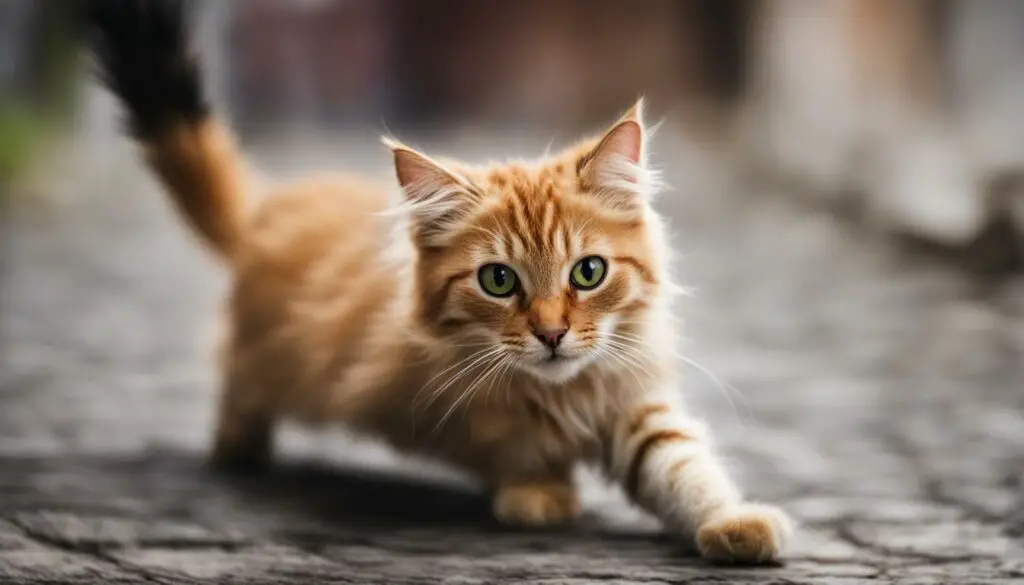
Personal Stories and Behavioral Challenges
Dealing with cat behavior issues can be a challenging and sometimes frustrating experience. Many cat owners, including myself, have encountered problems like hissing and tail chasing in our pets. These behaviors can be alarming and may leave us wondering why our cats are acting this way. Through personal experiences and veterinary visits, I have learned valuable insights into addressing these behavior issues.
One personal story that stands out is when my cat started hissing at family members for no apparent reason. It was a stressful and perplexing situation as we couldn’t understand why he was suddenly exhibiting this aggressive behavior. After a visit to the veterinarian, we discovered that our cat was experiencing pain due to an underlying medical condition. Treating the medical issue and providing pain relief greatly improved his behavior.
Another common challenge is tail chasing behavior. I have heard stories from fellow cat owners who have witnessed their cats endlessly chasing their tails, sometimes to the point of causing injury. It can be a troubling sight, and it is essential to address the underlying causes. Through veterinary visits, owners can determine if the behavior is due to compulsive disorders, stress, or other factors. Through behavior modification techniques and environmental enrichment, tail chasing can be managed and prevented.
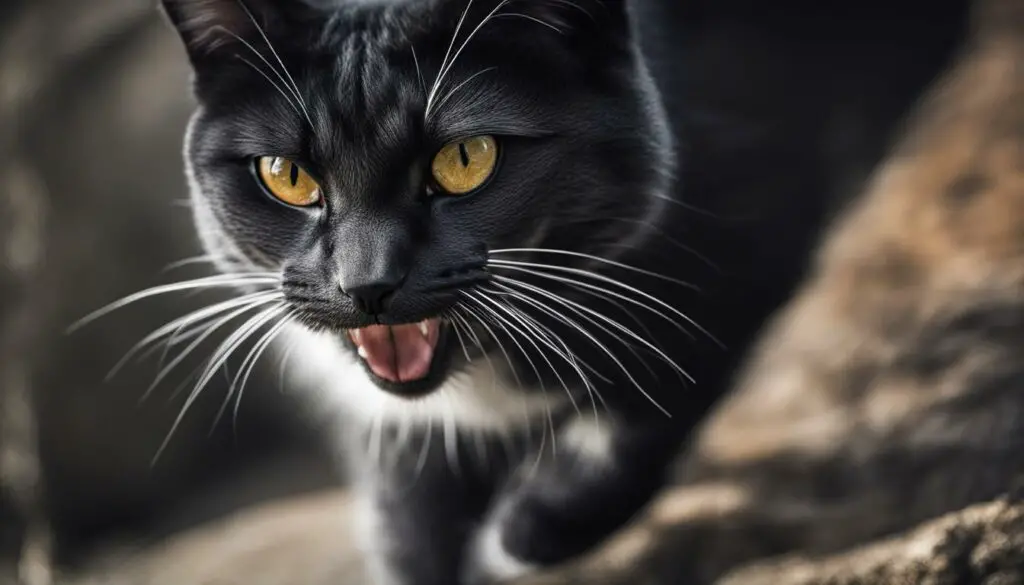
Behavior issues are not uncommon in cats
Behavior issues are not uncommon in cats, and it’s crucial to seek professional advice to understand and address them. Veterinary visits can help diagnose any underlying medical conditions that may be contributing to the behavior issues. By consulting with a veterinarian, you can develop a customized treatment plan that may include medication, behavior therapy, and environmental modifications.
Remember, each cat is unique, and their behavior issues may have different underlying causes. By sharing personal experiences and seeking veterinary help, we can gain valuable insights into cat behavior and find effective solutions for our feline friends.
Possible Causes for Self-Directed Aggression
Self-directed aggression in cats, such as tail biting and attacking, can have various underlying causes. It is important to identify and address these causes to effectively manage and treat the behavior. Here are some possible causes to consider:
- Discomfort: Cats may engage in self-directed aggression if they are experiencing discomfort or pain. This can include issues like dental problems, arthritis, or digestive issues. It is essential to ensure your cat’s physical health and address any potential sources of discomfort.
- Fleas: Flea bites can cause intense itching and discomfort, leading some cats to exhibit aggressive behaviors towards their own bodies, including biting their tails. Regular flea prevention and treatment can help alleviate this problem.
- Hyperesthesia Syndrome: Hyperesthesia syndrome is a condition that can cause cats to become overly sensitive to touch and can trigger self-directed aggression. It is a neurological condition that may require medication and environmental modifications for management.
- Stress in Cats: Stress and anxiety can contribute to self-directed aggression in cats. Cats may become overwhelmed by their environment or social interactions, leading to the development of aggressive behaviors towards themselves. Identifying and reducing stressors in the cat’s environment can help alleviate this behavior.
By addressing the discomfort, fleas, hyperesthesia syndrome, and stress in cats, you can help reduce self-directed aggression and improve your cat’s overall well-being. If you notice any concerning behaviors, it is always recommended to consult with a veterinarian who can provide a proper diagnosis and treatment plan tailored to your cat’s specific needs.
| Possible Causes for Self-Directed Aggression | Management Strategies |
|---|---|
| Discomfort | – Ensure your cat’s physical health with regular veterinary check-ups and address any underlying medical issues. – Provide a comfortable and pain-free environment for your cat. – Consult with a veterinarian about appropriate pain management strategies. |
| Fleas | – Use regular flea prevention and treatment methods. – Ensure a clean and flea-free environment for your cat. – Consult with a veterinarian for effective flea control options. |
| Hyperesthesia Syndrome | – Seek veterinary diagnosis and guidance for managing hyperesthesia syndrome in cats. – Follow any prescribed medication protocols. – Make necessary environmental modifications to minimize triggers. |
| Stress in Cats | – Identify and address stressors in your cat’s environment. – Provide a safe and comfortable space for your cat to retreat to. – Incorporate stress relief techniques such as interactive play and environmental enrichment. |
Remember, every cat is unique, and the causes for self-directed aggression can vary. Observing your cat’s behavior, seeking veterinary guidance, and implementing appropriate management strategies are crucial steps towards improving their well-being and behavior.
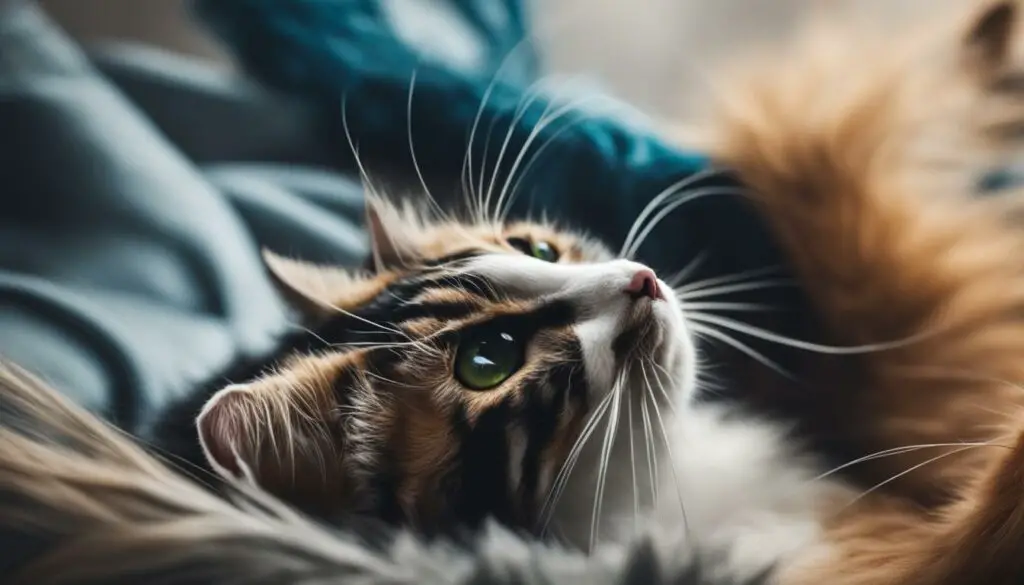
The Role of Stress in Cat Behavior
Stress can significantly impact a cat’s behavior, leading to various issues that require attention and intervention. Understanding and identifying sources of stress in cats is crucial for creating a more harmonious and balanced environment for your feline friend. Implementing stress relief techniques and symptom solvers can help alleviate and manage stress-related behaviors such as redirected aggression.
Stress in cats can arise from various factors, including changes in their surroundings, social conflicts, lack of stimulation, or medical conditions. Cats are sensitive creatures, and even seemingly minor disruptions can trigger stress responses. It’s important to observe and assess your cat’s behavior for signs of stress, such as excessive grooming, hiding, excessive vocalization, or aggression.
To address stress-related behavior, implementing stress relief techniques can make a significant difference. Providing a safe and secure environment with hiding spots, vertical spaces, and interactive toys can reduce anxiety and promote mental stimulation. Regular play sessions and positive reinforcement can also help redirect your cat’s energy and build a positive association with certain activities.
| Stress Relief Techniques | Symptom Solvers |
|---|---|
|
|
“Stress in cats can manifest in different ways, and it’s essential to address it promptly to prevent the development of more severe behavioral issues. By implementing stress relief techniques and utilizing symptom solvers, you can create a calm and supportive environment for your furry companion.”
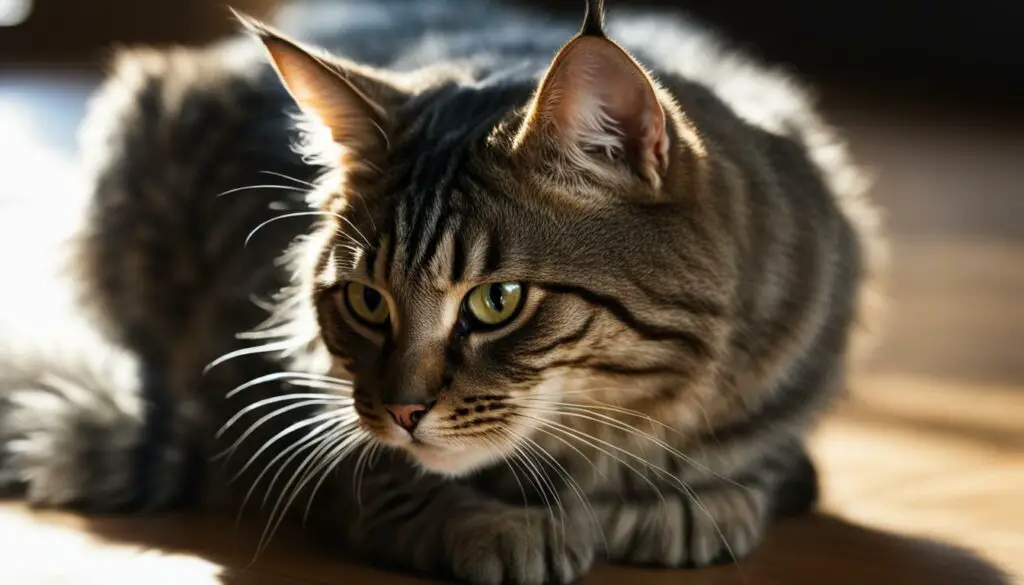
Redirected Aggression: Understanding and Managing
Redirected aggression is a phenomenon wherein a cat, when stimulated or provoked by one stimulus, directs its aggression towards another individual or object. This can occur when a cat is unable to respond directly to the perceived threat or stimulus. Recognizing the signs of redirected aggression, such as sudden outbursts of aggression, dilated pupils, or flattened ears, is crucial for managing this behavior effectively.
Managing redirected aggression involves providing outlets for the cat’s energy, redirecting their attention to alternative stimuli, and creating a calm and peaceful environment. By utilizing stress relief techniques, symptom solvers, and behavior modification strategies, you can help your cat navigate and overcome their stress triggers, reducing the occurrence of redirected aggression.
Seeking Proper Veterinary Diagnosis and Treatment
When your cat exhibits challenging behaviors such as self-directed aggression or compulsive disorders, it is essential to seek proper veterinary diagnosis and treatment. A thorough physical examination and tests can help identify any underlying medical causes or conditions that may be contributing to your cat’s behavior issues. The veterinary professional will gather important information about your cat’s health history and conduct a comprehensive evaluation to determine the best course of action.
Once a diagnosis is established, various treatment options can be considered to address your cat’s specific needs. These may include behavioral therapy, medication, and environmental modifications. The goal is to reduce and manage the signs of compulsive behavior or aggression, improving your cat’s overall well-being and quality of life.
Working closely with your veterinarian throughout the diagnosis and treatment process is crucial. They will provide guidance and support, helping you navigate the complexities of your cat’s behavior issues. Additionally, they can offer valuable insight into preventive measures and long-term management strategies to ensure the continued health and happiness of your feline companion.
Remember, seeking veterinary care is essential not only for addressing behavioral issues but also for ruling out any underlying medical conditions that may be contributing to your cat’s behavior. By taking the necessary steps to understand and address your cat’s needs, you can provide them with the best possible care and create a harmonious environment for both you and your beloved pet.
Calming Techniques and Products
Managing stress and anxiety in cats is crucial for their overall well-being. Fortunately, there are various calming techniques and products available that can help create a calm and soothing environment for your feline friend. These tools, when combined with behavior modification and stress relief techniques, can contribute to a happier and more relaxed cat.
One popular option is the use of calming drops, which are designed to help reduce anxiety and promote relaxation in cats. These drops can be added to your cat’s food or water, or applied directly onto their fur. The natural ingredients in calming drops, such as chamomile or lavender, have a soothing effect on cats and can help alleviate stress.
Another effective tool is a calming collar. These collars are infused with pheromones that mimic the natural calming scents produced by mother cats. By wearing a calming collar, your cat can experience a sense of security and relaxation. These collars are easy to use and can provide continuous calming benefits for your cat.
Behavior Modification and Anxiety Management
Alongside calming techniques and products, it is important to implement behavior modification strategies to address the underlying causes of stress and anxiety in cats. Environmental enrichment, such as providing interactive toys, scratching posts, and vertical climbing spaces, can help alleviate boredom and promote mental stimulation. Additionally, establishing a routine and providing a safe space for your cat to retreat to can also contribute to reducing anxiety.
If your cat’s stress and anxiety persist, it may be beneficial to consult with a veterinarian or a feline behaviorist. They can provide expert guidance on managing your cat’s anxiety and recommend additional stress relief techniques or medication if necessary.
Remember, every cat is unique, and finding the right combination of calming techniques and products may involve some trial and error. By prioritizing your cat’s emotional well-being and providing a stress-free environment, you can help them lead a happier and more relaxed life.
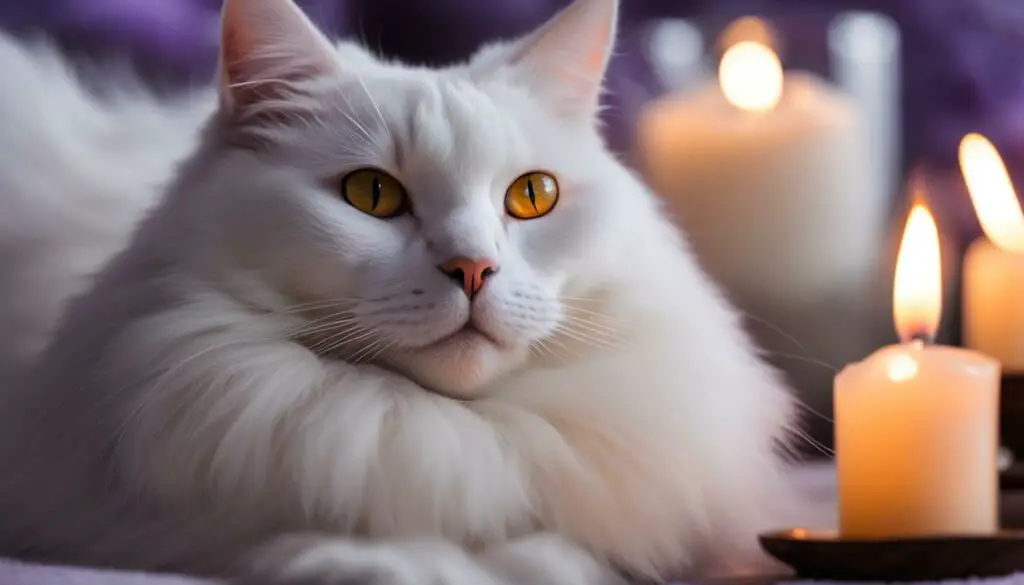
| Calming Techniques and Products | Benefits |
|---|---|
| Calming drops | Reduces anxiety and promotes relaxation |
| Calming collar | Infused with natural calming pheromones for a sense of security |
| Behavior modification | Addresses underlying causes of stress and anxiety |
| Environmental enrichment | Provides mental stimulation and reduces boredom |
| Veterinary consultation | Expert guidance on managing anxiety and stress relief techniques |
The Importance of a Holistic Approach
Taking a holistic approach to addressing cat behavior issues is essential for promoting the overall well-being of cats. By considering both the physical and emotional health of your feline companion, you can effectively manage and improve their behavior. This approach involves looking beyond the surface-level symptoms and delving deeper into the underlying causes.
When it comes to addressing cat biting tail and growling, a holistic approach means considering all possible factors that may contribute to these behaviors. This includes ruling out any medical conditions that could be causing discomfort or pain, as well as evaluating the cat’s environment and overall level of stress. By addressing these underlying issues, you can help create a calmer and more harmonious environment for your cat.
One aspect of a holistic approach is paying attention to the emotional well-being of your cat. Cats are sensitive creatures that can be easily affected by changes in their surroundings or routines. By providing them with mental stimulation, environmental enrichment, and plenty of opportunities for play and social interaction, you can help alleviate stress and promote a healthy emotional state.
Table: Benefits of a Holistic Approach
| Physical Health | Emotional Well-being | Treatment Success |
|---|---|---|
| Addresses underlying medical causes | Reduces stress and anxiety | Improves behavior and quality of life |
| Incorporates appropriate medication and therapies | Provides mental stimulation and environmental enrichment | Fosters a strong bond between cat and owner |
| Prevents potential physical complications | Promotes a sense of security and stability | Reduces the risk of relapse or recurrence |
A holistic approach to cat behavior also involves understanding the complex connection between physical and emotional health. When a cat’s physical needs are met, such as through proper nutrition, regular exercise, and routine veterinary care, it can positively impact their emotional well-being. Conversely, addressing their emotional needs can improve their overall physical health. This interconnectedness highlights the importance of considering both aspects when addressing cat behavior issues.
Ultimately, a holistic approach aims to provide comprehensive care for cats, taking into account their physical and emotional needs. By adopting this approach, you can increase the likelihood of treatment success and create a harmonious and fulfilling relationship with your feline companion.
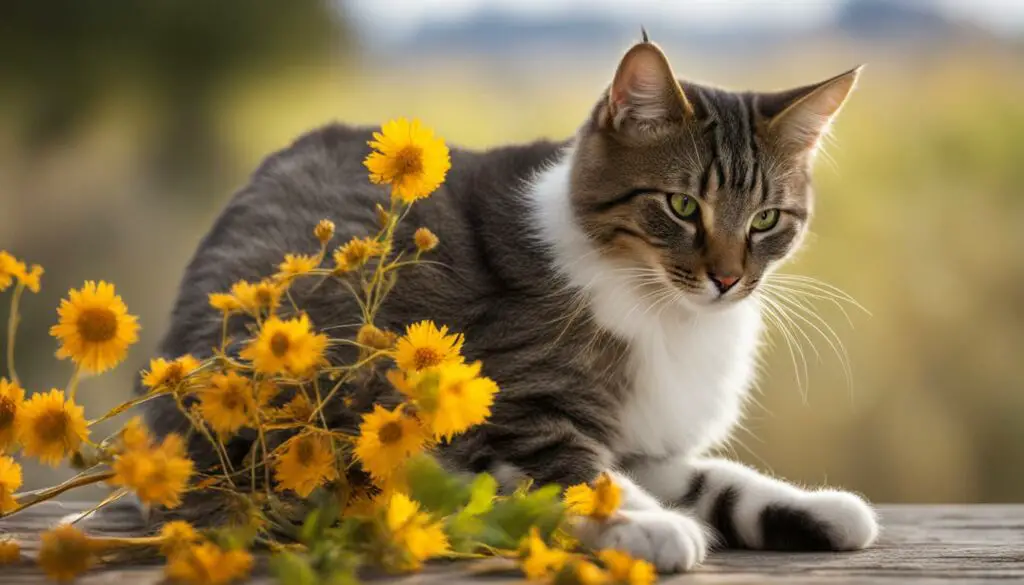
Conclusion
Understanding and addressing cat behavior, including cat aggression and compulsive disorders, is essential for the well-being of our feline friends. By taking a holistic approach that incorporates stress relief techniques and veterinary treatment, we can effectively manage and improve our cat’s behavior.
When faced with challenging behaviors like tail biting and growling, it is crucial to seek proper veterinary diagnosis and treatment. Through a thorough physical examination and necessary tests, underlying medical causes can be identified and addressed.
In addition to medical intervention, behavior therapy, environmental modifications, and stress relief techniques play a significant role in managing cat behavior issues. Calming techniques and products, such as calming drops or collars, can provide additional support in reducing stress and anxiety.
By considering both the physical and emotional health of our cats, we can increase the chances of treatment success. With patience, understanding, and a comprehensive approach, we can help our cats lead happier, healthier lives.
FAQ
Why is my cat biting its tail and growling?
Biting the tail and growling can be signs of aggression or compulsive disorders in cats. Understanding the underlying causes can help address your cat’s needs better.
What are compulsive disorders in cats?
Compulsive behaviors in cats can include excessive sucking and chewing, hunting and pouncing, self-directed aggression like tail chasing or foot chewing, and overgrooming. These behaviors may stem from conflict and can become compulsive disorders.
How can compulsive disorders in cats be diagnosed and treated?
To diagnose compulsive disorders in cats, it is important to rule out or treat any underlying medical causes. Once diagnosed, a combination of behavior therapy, environmental modifications, and medication such as serotonin reuptake inhibitors may be necessary for management.
What is psychogenic alopecia in cats?
Psychogenic alopecia refers to excessive licking or pulling out tufts of hair in cats without any underlying medical cause. It can be a compulsive disorder that arises from situations of conflict, frustration, or anxiety.
What is feline hyperesthesia syndrome?
Feline hyperesthesia syndrome is a condition characterized by rippling skin, muscle spasms, and tail chasing in cats. It may be a compulsive behavior or have an underlying medical or neurological cause.
Why do cats chase and bite their tails?
Some cats may chase and bite their tails as a form of play or displacement behavior. Situations of conflict and anxiety can trigger tail chasing, which can lead to tail mutilation if left unchecked.
What challenges do cat owners face with behaviors like hissing and tail chasing?
Cat owners often encounter challenges with behaviors like hissing and tail chasing. Personal stories highlight the struggles and visits to veterinarians for diagnosis and treatment.
What causes self-directed aggression in cats?
Self-directed aggression, including tail biting and attacking, can be prompted by discomfort or underlying health issues such as flea bites or hyperesthesia syndrome. Stress and conflict can also contribute to self-directed aggression.
How does stress affect cat behavior?
Stress plays a significant role in cat behavior and can lead to various issues, including self-directed aggression. Each cat’s stressors may vary, and identifying and reducing stress through symptom solvers like stress relief techniques and redirected aggression can help mitigate these issues.
What should I do if my cat exhibits self-directed aggression?
When faced with challenging cat behaviors like self-directed aggression, it is important to seek proper veterinary diagnosis and treatment. A thorough physical examination, tests, and possible treatment options including medication, behavioral therapy, and environmental modifications can help address the underlying causes.
Are there calming techniques and products that can help manage stress in cats?
Yes, calming techniques and products such as calming drops and collars can be helpful in managing stress and anxiety in cats. These tools, along with behavior modification and stress relief techniques, can contribute to a calmer and happier cat.
What is the importance of a holistic approach in addressing cat behavior issues?
Taking a holistic approach to addressing cat behavior issues involves considering both the physical and emotional health of the cat. By addressing underlying medical causes, reducing stress, and providing appropriate behavior modification techniques, the chances of treatment success are enhanced.
How can I improve my cat’s behavior if it is biting its tail and growling?
Understanding and addressing cat biting tail and growling requires a comprehensive approach that includes proper veterinary diagnosis, addressing underlying causes, and providing appropriate treatment. By considering both the physical and emotional health of the cat, you can effectively manage and improve your cat’s behavior.
Source Links
- https://thecatsite.com/threads/hissing-and-growling-at-nothing-biting-and-attacking-her-tail.250756/
- https://vcahospitals.com/know-your-pet/cat-behavior-problems-compulsive-disorders-in-cats
- https://www.thesprucepets.com/cat-attacking-own-tail-553998

